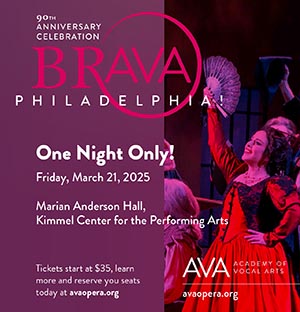“Love, Cecil” opening Aug. 3 at the Ritz at the Bourse, is director Lisa Immordino Vreeland’s documentary about Sir Cecil Beaton, best known for his stunning photographs and dazzling, Oscar-winning set designs and costumes for “My Fair Lady.”
But Beaton was also an author, scrapbooker and painter. His career stretched from the 1920s through the mid-1970s, and he is famous for photographing everyone from Edith Sitwell to Queen Elizabeth to Mick Jagger.
Vreeland adeptly captures the spirit of Beaton through more than 1,300 photographs and audio and video clips, plus writings and interviews. In a recent phone interview, Vreeland explained that she got the idea for the film when she was making “Diana Vreeland: The Eye Has to Travel,” her 2011 documentary about her grandmother-in-law. “There was a scene from the [1971] documentary ‘Beaton by Bailey’ that was so great that I thought, [Cecil] could be a really good character.”
Vreeland’s instincts told her that Beaton, who died in 1980 at age 76, would be a worthy documentary subject because he was such a flawed man — brilliant but also self-destructive. “You don’t want to put the [subject] on a pedestal, but you want to give people a taste of the times.”
She transports audiences to Beaton’s heady world through the use of archival images.
“I negotiate and work with archives to get rare footage and be authentic as I can. The archives often dictate where the film is going. We had an obscene amount of beautiful material. It became a challenge to edit it, and to show images he’s not as well-known for.”
“Love, Cecil” envelops viewers in images of the Bright Young Things of the 1930s, through his photojournalism during the war years, as well as his work in Hollywood. His creativity knew no bounds.
As Vreeland observed, “For him, life was about creativity. He had to create — and he had to create on so many different fronts. He was not only photographing important people and [moments in] history, but he had a voice in the dialogue about what was going on in the 20th century. He was a visionary.”
The filmmaker was creative in how she presented the copious material. “Love, Cecil” features more than 700 photos by Beaton — including many selfies. Vreeland gives them emotion by washing them with color. She also animates pages from his scrapbook. Out gay actor Rupert Everett narrates the film using Beaton’s journal entries.
Both Vreeland’s visual and narrative approaches express the “idea” of Beaton, not just the person.
“I like to do a character study — analyze the subject and break them down. You start to inhabit the lives of the characters you portray. I love arts and culture, and characters who reinvent themselves. Beaton had a tough side, and his insecurities reared up their ugly head,” she said.
One of Beaton’s greatest struggles, which is palpable in the film, was with his homosexuality. Vreeland said that being gay wasn’t something Beaton could be open about.
“When he was young and was putting on makeup at his mother’s dressing table, he knew it was taboo. Beaton wasn’t able to [be out]. He didn’t want anything to threaten his desire to be on the rise in society. A [same-sex] relationship would.”
Beaton grappled with being an outsider, Vreeland said. “He never felt quite good enough. That’s a lot of the reason behind him writing what he did in Vogue. [Hint: A remark he put in print got him fired.] He talked about that and was introspective in his diary about not feeling adequate enough.”
Beaton was also seen as a snob, which Vreeland believes was a manifestation of his insecurity.
Ultimately, Vreeland wants viewers to leave the theater feeling inspired by the creative genius that was Beaton.
“It’s purposeful to pull at the heartstrings — not hard to do with Beaton, he was alone in life; he sacrificed everything for creativity — but I want people to feel they can go and achieve things. I want people to have guests trace their hands on the walls of their bathrooms,” referencing something creative that Beaton did.
As for the Beaton photographs that most inspired Vreeland, the filmmaker offered the World War II images.
“I see something in the quality of this work. There’s a technical diligence. The square photo format and the messages — homoerotic images of soldiers dealing with the day-to-day issues of war; laundry drying on the line in Africa; turbaned heads of soldiers in India — I love the different subject matter and the realness he gave to it. It was less fantasy and more reportage.”

